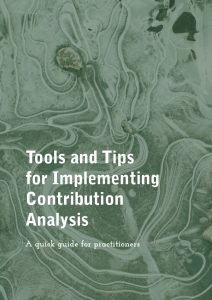 Evaluating the impact of advocacy and unpicking why and how a particular campaign, organisation or group of actors played a meaningful role in achieving a policy outcome is tricky. It is often a multitude of factors that play a part in different ways and at different times.
Evaluating the impact of advocacy and unpicking why and how a particular campaign, organisation or group of actors played a meaningful role in achieving a policy outcome is tricky. It is often a multitude of factors that play a part in different ways and at different times.
Contribution analysis is a flexible approach that develops a credible, evidence-based narrative to understand the influence of different actors. The learning brief reflects on experience from five recent projects and builds on a previous brief published by the Center for Evaluation Innovation on applying contribution analysis to understanding policy advocacy1.
The aim of the brief is to encourage organisations to apply the approach and share ways they can do so under time and resource constraints. We wanted to provide practical ideas to support them through the process. If you have any reflections or reactions, please get in touch.
Laura Hopkins leads our thinking on policy and advocacy evaluation.
The Center for Evaluation Innovation is a non-profit that works with foundation leaders and other evaluators to advance evaluation and learning practice in philanthropy.
Find out more about our work on policy and advocacy.
Feature image: istock/savcoco

